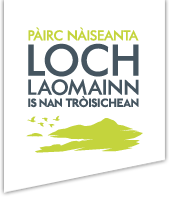
Why plan for change?
Change in any aspect of our life can be seen as a good or bad thing. People can see change differently, and at different times in life our own perspective on change can, well, change.
Change in any aspect of our life can be seen as a good or bad thing. People can see change differently, and at different times in life our own perspective on change can, well, change.
- To conserve and enhance the natural and cultural heritage,
- To promote the sustainable use of the natural resources of the area,
- To promote understanding and enjoyment (including enjoyment in the form of recreation) of the special qualities of the area by the public,
- And to promote sustainable social and economic development of the communities of the area.
So, our first aim clearly sets out the responsibility we have for conservation whilst the fourth aim gives us responsibility for supporting social and economic development considerations too.
Change in built development
In terms of new build development, the main government process for agreeing to change is the planning system. It provides the way to decide on whether a proposed development is acceptable or not, and also to put a plan in place that maps out where development should and shouldn’t go as well as the ‘rules’ for new development (like access, design, flooding, safeguarding woodland or important habitats or species). This ‘development planning’ process is what LIVE Park is all about. This inevitably involves change, of some sort, and not everyone will agree.
The Plan we’re updating looks to influence new development to the best locations and to provide greater certainty for everyone. New development is quite acceptable in the National Park (provided it is meets the rules set out) and a landowner can bring forward proposals for development at any time by submitting a planning application. There are difficult choices to be made.
Planning for change
So, how do we come to a view on what development might be needed over the next 20 years?
First of all we gather a lot of background information as evidence to help make judgements on what changes are likely to be required over the short, medium and long term. The benefits to businesses, schools and local communities in doing this is that having a plan like this provides certainty of what type of development and which locations would be acceptable in principle. We also ask communities for their views, as we did during last year as we prepared for LIVE Park and again during a formal consultation process like we’re in now. All of this informs the Plan going forward. It’s this co-ordinated approach that helps make sure all new development plays a role in creating the type of places we want to live in, work in, invest in and visit.
What’s the point of this stage in the process?
The whole point of this process is to ‘front-load’ the planning system and to look for agreement with communities, landowners and public bodies on where development is ok and where it’s not. It means when a planning application does comes in, it is not a surprise to people. Planned change gives confidence for future development (helping us achieve our fourth aim), removes unwanted surprises to local communities, whilst ensuring that our natural and built environments are protected (ensuring our first aim is delivered).
Still time to have your say…
The Main Issues Report is the best opportunity for everyone from residents, businesses, public bodies and visitors to share their views. It is the first stage in the process of producing the Local Development Plan. Have a look at our Development Plan Scheme for a more detail on how this process works. Later in the week we’ll be blogging about what happens next once this stage in the process is over.
There’s still time to have your say on what change you do or don’t want to see in the Park.
There are loads of ways to let us know your views from texting us, sending us a Facebook message, to emailing in, writing to us, or submitting a formal consultation response.

